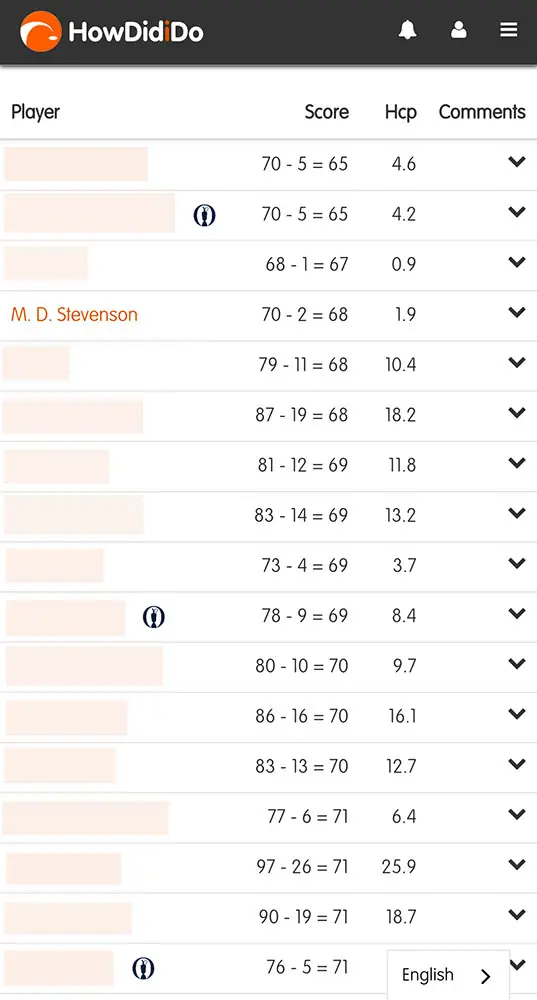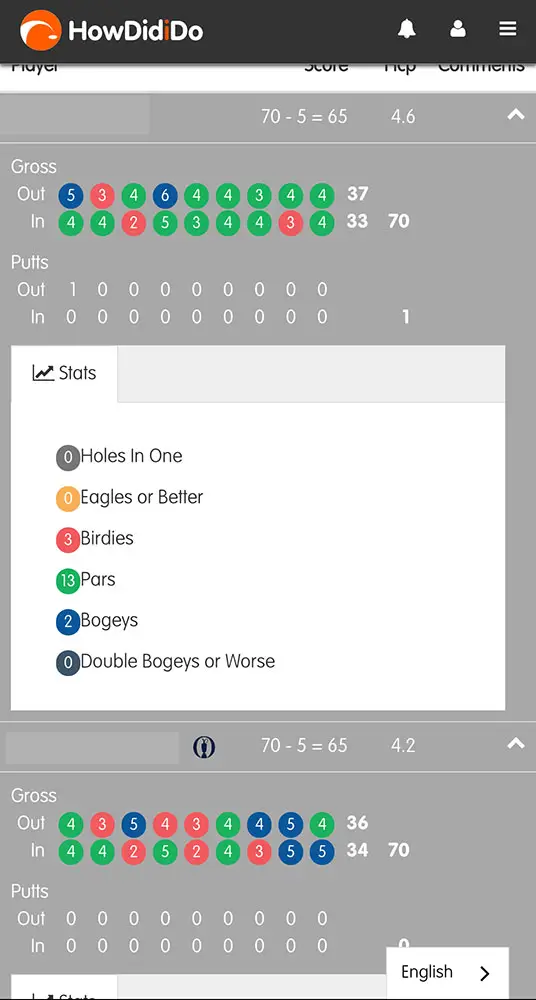How Does a Countback Work in Golf?
If you think about it, it’s difficult to imagine ties being a regular occurrence in golf.
On the professional tours, the pros tee it up for 4 days of tournament which take place over 72 holes. It’s fair to say there should be enough golf there to separate a winner from the rest of the field.
In amateur golf, you have a combination of different ages, abilities, handicaps and starting times all thrown together trying to hit a small golf ball over more than 111 acres of golf course into 18 different holes. Again there should be enough factors at play to separate one winner!
Yet ties are still a common occurrence in both the professional and amateur game. We dive into what happens when there’s a tie and in particular how the countbacks work in the amateur game.
What happens when golfers tie?
For anyone who regularly watches golf on TV, you’ll know that when a PGA or European Tour event finishes in a tie, there is a playoff where the tying golfers play additional holes until there is a winner.
The playoff depends on the tournament. Most regular tour events will just be a sudden death playoff until one golfer scores lower than the other. They usually keep playing the 18th hole over and over until this happens. This has led to some pretty epic moments on tour.
However there are anomalies.
At The Players Championship for example, if two or more golfers tie for lead, there is a three hole aggregate playoff on 16, 17 and 18. At The Open Championship it’s a 4 hole playoff and at the US Open the players come back the next day for an 18 hole playoff!
This is only for ties for first place, ties in other positions aren’t played out in this manner (otherwise tournaments would never end). When the ties occur for any place but first, the prize money is simply added together for the two positions and split.
Playoff holes work for the PGA Tour as they’re playing for huge sums of money, but they can take a lot of time. In amateur golf it’s unlikely you’ll end up having a playoff for your usual Saturday competition (unless it’s a board prize) as they are not practical.
Generally when amateurs tie in golf, it goes to a countback to decide the winner.
Now it’s time to discuss exactly what a countback is.
What is a countback in golf?
A countback is a way to separate players that are tied after the conclusion of a competition. The winner is generally the golfer with the lowest score over the last nine holes in a countback.
Unlike the professional tours, a countback doesn’t require additional holes to be played by the tieing golfers. Instead it requires the golfing or competition secretary to do some number crunching once the competition has finished.
Whereas the pros only have playoffs for first place, in the amateur game, a countback is usually done to determine which golfers qualify for a prize. For your typical club competition this will be for positions 1, 2 and 3. Any ties outside of that will be shared positions.
In the example below, the top two players have tied for 1st, so a countback takes place to determine who wins. Whereas for positions 4 – 6 and 7 – 10 there’s no countback despite being tied, as there are only prizes available for 1st, 2nd and 3rd.

This is the short and easy answer, but countbacks can be somewhat difficult to understand if you have never experienced one before. To get a better understanding we’ll go on to explain how it works.
How do you calculate a countback in golf?
A countback is calculated by totalling the scores of the final nine holes on the course scorecard. This would usually be holes 10 – 18.
If the competition was a shotgun start, with golfers starting on different holes, the countback would still be taken over holes 10 – 18 and compared between the two.
The countback should always incorporate the format of the competition. For example, if the competition is a scratch comp (no handicaps) then it’s simply a countback of the tieing players gross scores on the back nine. If however, the tournament was played with handicaps, then the nett scores should be used in the countback.
In the same previous example, the golfer in position 1 won on a countback as they scored 33 on the back nine vs. 34 for the player who tied and therefore finsihed in second place.

On occasions a countback can end in yet another tie, but don’t worry there are methods in place for this too.
- If the golfers are still tied after the countback of the final nine holes, then you shorten what you are looking at down to the last six holes, usually holes 12 – 18. (In the example above, player 1 still wins: -1 vs. level par)
- After the six hole mark if the golfers are still tied, then the countback goes down to three holes (holes 16 – 18). (In the example above, player 1 still wins: -1 vs. +1)
- Finally, if the golfers still can’t be separated by any of the above, then the ultimate tiebreaker is to compare the scores on the final hole – the 18th. (In the example above, player 1 still wins: par vs. bogey)
If you’re someone that is competing in amateur competitions regularly, keep in mind that in the event of a tie, most of the tournaments will be decided on how you finished it.
How does a countback work in stableford golf?
The process for a stableford competition countback is the same as a stroke play competition. However, instead of using standard net or gross scores, the countback uses the total stableford points instead.
The number of holes used in the countback are the same, starting with the back nine, then the back six, back three and final hole.
The odds are higher in stableford golf that the points are not the same per hole, so your tiebreak shouldn’t last for too long.